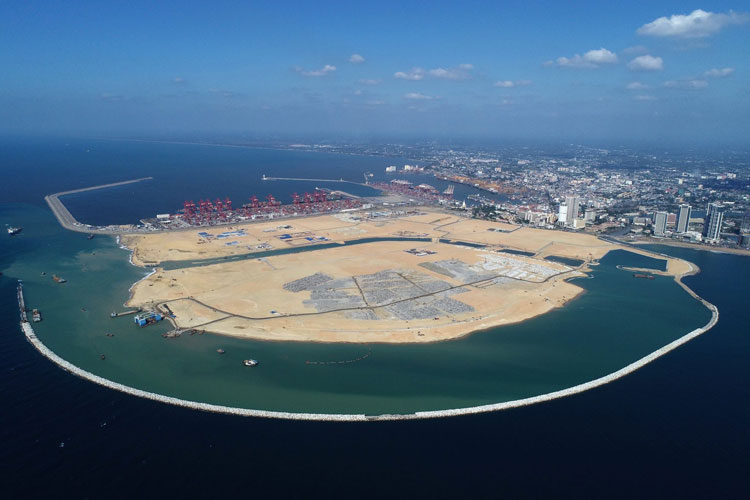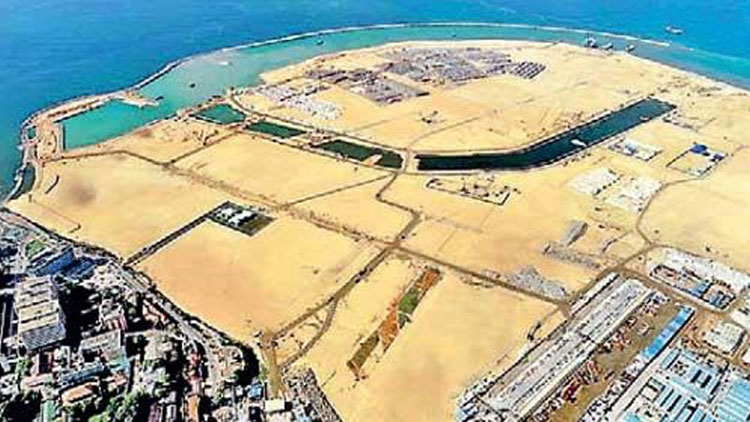INDIAN ARMED FORCES CHIEFS ON OUR RELENTLESS AND FOCUSED PUBLISHING EFFORTS

The insightful articles, inspiring narrations and analytical perspectives presented by the Editorial Team, establish an alluring connect with the reader. My compliments and best wishes to SP Guide Publications.

"Over the past 60 years, the growth of SP Guide Publications has mirrored the rising stature of Indian Navy. Its well-researched and informative magazines on Defence and Aerospace sector have served to shape an educated opinion of our military personnel, policy makers and the public alike. I wish SP's Publication team continued success, fair winds and following seas in all future endeavour!"

Since, its inception in 1964, SP Guide Publications has consistently demonstrated commitment to high-quality journalism in the aerospace and defence sectors, earning a well-deserved reputation as Asia's largest media house in this domain. I wish SP Guide Publications continued success in its pursuit of excellence.
- Prime Minister Modi Visits Punjab’s Adampur Air Base, Interacts with Airmen after Successful ‘Operation Sindoor’; Stern Message to Pakistan
- The layered Air Defence systems that worked superbly, the key element of Operation Sindoor
- Operation Sindoor | Day 2 DGMOs Briefing
- Operation Sindoor: Resolute yet Restrained
- India's Operation Sindoor Sends a Clear Message to Terror and the World – ‘ZERO TOLERANCE’
- Japan and India set forth a defence cooperation consultancy framework, talks on tank and jet engines
Another Chinese Conquest in Colombo
China getting 220 acres on 99 years lease and 49 acres free-hold in Colombo Port City is a massive strategic victory for Beijing
 |
The Author is Former Director General of Information Systems and A Special Forces Veteran, Indian Army |

On May 21, 2021, the Parliament of Sri Lanka passed the Port City Economic Commission Bill with 149 votes in favour and 58 against. The bill officially declares 269 hectares of land reclaimed from the ocean and annexed to the city of Colombo as the country's first special economic zone (SEZ) for services-oriented industries.
Construction of the Port City under a proposal by China Harbour Engineering Company was to begin in March 2011 but work was stopped. Subsequently in mid 2012, Sri Lankan Port Authority (SLPA) announced that the construction would commence on September 17, 2014 with budget estimated at $15 billion. Of the reclaimed land, 125 hectares (310 acres) was to be with government, 88 hectares (220 acres) was to be leased for 99 years to China Harbor Engineering Corporation undertaking the reclamation work. In addition, 20 hectares (49 acres) was to be given freehold to the Chinese company.
Ownership of land given to China in high security zone impinges on Sri Lanka’s sovereignty and impacts Sri Lanka’s geopolitical standing and dealings
Construction of the Colombo Port City project was launched on September 17, 2014 by Sri Lankan President Mahinda Rajapaksa (now Prime Minister) and Chinese President Xi Jinping. The project has been under criticism for multiple reasons, like: lack of transparency and irregularities like SLPA implementing the reclamation without such mandate - its official mandate being to deal with ports and shipping; ownership of land given to China in high security zone impinges on Sri Lanka’s sovereignty and impacts Sri Lanka’s geopolitical standing and dealings, and, adverse environmental impact of the project would be far greater than the economic benefits it may offer.
In December 2020, Sri Lankan conglomerate LOLC Holdings signed an agreement with China Harbour Engineering for a joint development project with investment value totaling $1 billion. The project includes residential, commercial and retail assets set to break ground in mid-2021. After the Port City bill was tabled in Parliament on April 8, 2021, 19 petitions were filed with the Supreme Court of Sri Lanka against it. However, Supreme Court ruled that the bill could be passed with a simple majority provided key clauses are amended to conform with the Sri Lanka’s Constitution.

What were the key clauses in the bill referred to by the Supreme Court and what amendments are to be carried out have not been disclosed. But the bill was passed after debate in Parliament. Mahinda Rajapaksa told Parliament that the Port City project would create 2,00,000 jobs in the first five years with the majority going to Sri Lankan nationals and that the bill provides a competitive framework to attract investment – mirroring what Imran Khan has been telling Pakistanis in relation to the China-Pakistan Economic Corridor (CPEC).
Under the legislation, a President-appointed commission will be established to govern the SEZ, which will also enable businesses to operate in any recognised foreign currency within the Port City. Yamuna Jayaratne, Director of Sales and Marketing of Colombo Port City has said that Sri Lanka already enjoys several advantages in the cost of doing business in comparison with established and mature services hubs such as Hong Kong and Dubai; Colombo is planned to become a major financial and services hub in South Asia.
There is no doubt that China plans to militarise the IOR akin to the SCS. Sri Lanka is not only an important keg in the India Ocean for China’s Belt and Road Initiative (BRI) but also as important military base.
China getting 220 acres on 99 years lease and 49 acres free-hold in Colombo Port City (total 269 acres of land) is a massive strategic victory for Beijing. Without doubt, the President-appointed commission to govern the SEZ will be dancing to Beijing’s tune. In July 2019, Hambantota Port was officially transferred to China for 99 years by Sri Lanka after it was not able to repay even the interest on loans taken from China’s Exim Bank and the losses were mounting. This was just the beginning of the debt trap that Sri Lanka may find difficult to recover from. Even Pakistani scholars began talking of how China has debt-tapped Sri Lanka and were fearful of same happening to Pakistan; realising that friendship with China’s runs one way – in China’s favour.
The magnitude of Chinese investments in the target country weighs the economy and payback capacity to ensure full payback includes an option for Beijing to extract strategic gains like taking over ports and land. This also puts the target country in submissive mode. For example, Chinese nuclear submarines and warships do not dock at berths mandated by SLPA in Colombo harbour to accommodate military vessels but instead at the Colombo South Container Terminal (CSCT), a deep-water facility built, controlled and run by the Chinese through an aid project. CSCT is also a ‘Chinese enclave’ within a Sri Lankan administered harbor, the berthing itself being a violation of the SLPA protocol.

The CSCT, Hambantota and 269 acres of territory in Colombo Port City are now firmly under Chinese control, the 99-year lease bit being whitewash euphemism. There is no doubt that China plans to militarise the IOR akin to the SCS. Sri Lanka is not only an important keg in the India Ocean for China’s Belt and Road Initiative (BRI) but also as important military base. In July 2017, China unveiled a massive ship described "magic island maker"; named ‘Tian Kun Hao’, capable of digging 6,000 cubic metres per hour, equivalent of three standard swimming pools. This would obviously be used in the Indian Ocean. An article in China Daily Mail on November 22, 2014 quoting Sri Lankan sources revealed that China plans to build 18 “Naval Bases” in the Indian Ocean including in Sri Lanka’s Hambantota, Pakistan and Myanmar.
China’s strategic aims in the Indian Ocean Region (IOR) are pretty apparent. With the tilt of the Rajapaksa brothers ruling Sri Lanka towards Beijing, the country can be expected to get sucked into China’s strategic sphere more and more.





